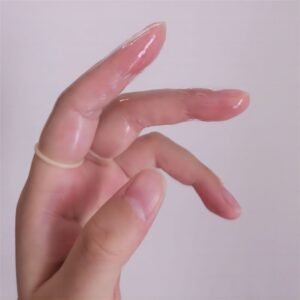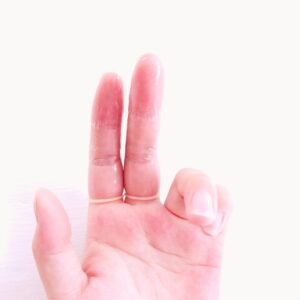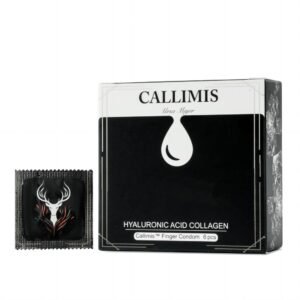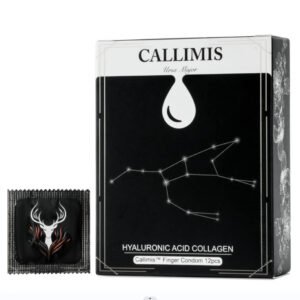多くの人は手指の衛生をまったく気にしません. セックス中や手マン中も, 彼らは事前に手を洗わないし、指用コンドームや手袋も着用しない. 今日は指がどれほど汚れているかをみんなに説明しなければなりません.
指についた汚れは何ですか?
Reasons for bacteria growth on fingers
How to keep hands and fingers clean?
Bacteria counts on fingers and hands
The number of bacteria on your fingers is a surprising topic. Studies have shown that there are about 100,000 bacteria per square centimeter of skin surface. This means that an average adult may carry up to 800,000 bacteria on the palm of his hand. This number is enough to make us re-examine the importance of daily hand hygiene.
To better understand this massive number, we can compare it to other everyday objects:
| Item | Average RLU value |
| Whole hand | 1005 |
| Toilet seat | 179 |
| Single finger About | 100,000 |
These data clearly show that our hands are actually much more “dirty” than we think. It is worth noting that people with nails longer than 2 mm have more than 10 times the number of bacteria on their hands as toilet seats. This finding highlights the importance of regular nail trimming, as long nails provide an ideal habitat for bacteria. Think about it, when you are doing finger sex, you put your bacteria-filled nails and fingers in contact with your vulnerable private parts without protection. . .
These amazing data not only reveal the large number of bacteria on the hands, but also highlight the importance of daily hand hygiene. Considering that hands are the part of the body that we contact most frequently with the outside world, these bacteria may become a medium for the spread of diseases. したがって, developing good hand hygiene habits, such as frequent hand washing, correct use of disinfectant products, and the use of finger cots during finger sex, are essential for maintaining personal and public health.
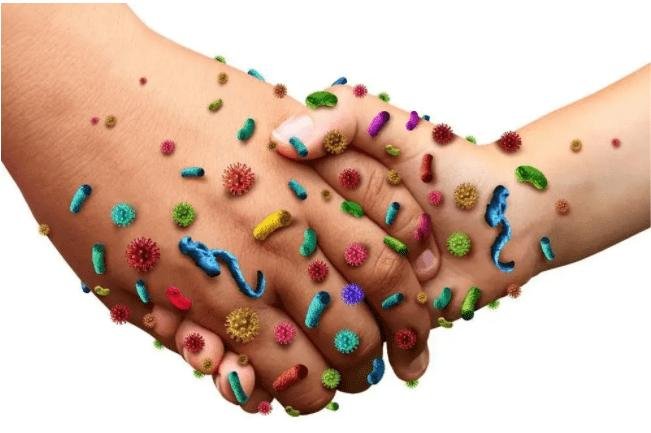
Bacteria types on fingers and hands
There are many types of bacteria on fingers, both non-pathogenic and potentially pathogenic. These microorganisms constitute a complex ecosystem that reflects the diversity of our daily living environment. The following are some common types of bacteria on fingers:
1. Staphylococcus: This is a Gram-positive coccus that occupies an important position in hand bacteria. There are mainly two types:
| タイプ | 名前 | Characteristics |
| Pathogenic bacteria | Staphylococcus aureus | Causes skin infection, food poisoning |
| Non-pathogenic bacteria | Staphylococcus epidermidis | Component of normal human flora |
2. Streptococcus: Another common Gram-positive cocci, it can be divided into several species. Among them, **Streptococcus pneumoniae** is a pathogenic bacteria of concern, which can cause respiratory infections.
3. Escherichia coli: Although it is mainly found in the intestines, it can also appear on the surface of the hands. This Gram-negative bacillus can cause intestinal infections and urinary tract infections in some cases.
4. Pseudomonas aeruginosa: This is a Gram-negative bacillus that is commonly found in moist environments. It can survive on the surface of the hands and may cause skin infections, especially if there are cuts on the hands.
5. Salmonella: This Gram-negative bacillus is mainly transmitted through food and water, but can also exist temporarily on the surface of hands. Salmonella can cause serious intestinal infections and sepsis.
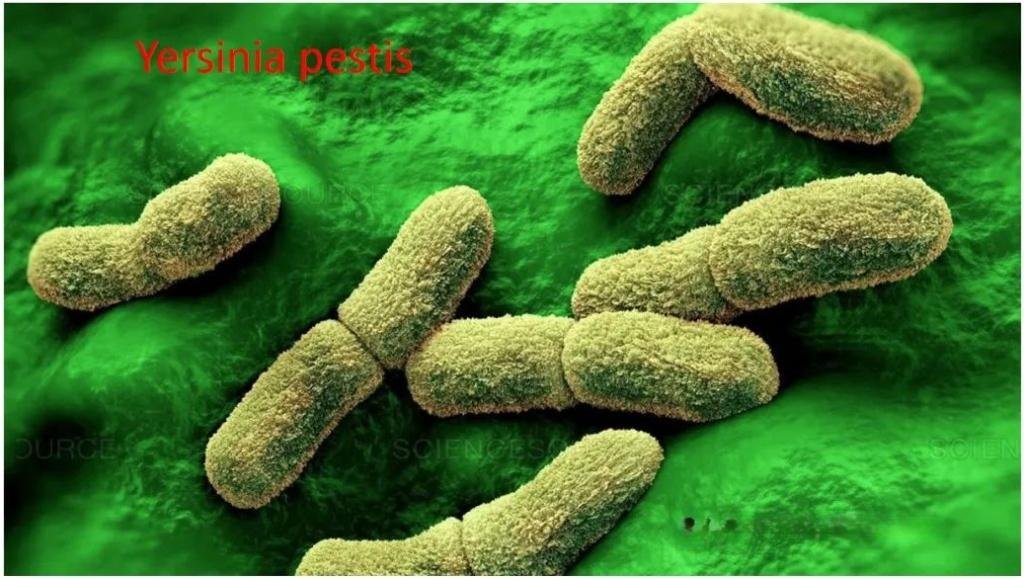
Reasons for bacteria growth on fingers
Daily contact

When discussing the causes of bacterial growth on fingers, we have to pay attention to the most common route of bacterial transmission in daily life – surface contact. This seemingly simple interaction is actually one of the main channels for bacterial transmission and deserves a deeper understanding.
1. Surface Contact: When fingers touch any surface, microbial exchange occurs. The extent of this exchange depends on several factors, 含む:
– Surface properties: roughness, moisture
– Types of microorganisms: bacteria, ウイルス
– Contact strength: light touch, heavy pressure
– Transfer direction: from hand to object or vice versa
2. Microbial Transfer: Research shows that the efficiency of microbial transfer through surface contact is affected by a variety of factors. 例えば, wet surfaces are more likely to promote the transfer of microorganisms because moisture provides a better living environment for microorganisms. また, rough surfaces hold more microorganisms than smooth surfaces because they provide more places to hide.
3. Repeated Contact: Frequent contact with the same surface will cause microorganisms to travel back and forth between fingers and objects multiple times, significantly increasing the accumulation of microorganisms. Especially for high-touch surfaces in public places, such as elevator buttons, door handles, 等, they can become hot spots for bacterial transmission.
4. Friction: ある場合には, friction can increase the transfer efficiency of microorganisms. 例えば, when we use a mobile phone or computer keyboard, sliding our fingers back and forth can unknowingly increase the transfer probability of microorganisms.
It is important to note that different types of microorganisms may behave differently in surface contact. 例えば, certain bacteria may adhere more easily to certain surfaces, while viruses may survive longer on smooth surfaces. This variability complicates a comprehensive understanding and prediction of the spread of microorganisms through surface contact.
したがって, please develop targeted hygiene measures and wear finger condoms! Effectively reduce the spread of bacteria in daily life, thereby protecting the health of yourself and others.
Skin environment of fingers
The unique structure of the finger skin provides an ideal living environment for bacteria. The nail bed area between the nail and the skin forms a hidden and moist microecology that is particularly suitable for the reproduction of microorganisms. This environment is not only difficult to reach through regular cleaning, but also provides a natural haven for bacteria.
加えて, the palmar skin of the fingers is rich in sweat glands, and the sweat secreted provides the necessary moisture and nutrients for bacteria. These physiological characteristics together form a microenvironment that is conducive to bacterial growth, explaining why fingers are an ideal place for bacteria to breed.
Disease transmission
The spread of finger bacteria is an important way for many diseases to occur. Studies have shown that **80% of bacteria and viruses are transmitted and infected through our hands**. This alarming data highlights the key role of hand hygiene in disease prevention.
Imagine how terrible it is to have fingering or sex without washing your hands.
Do you think that bacteria on your fingers can only cause vaginitis? 実際には, many daily diseases may be caused by dirty fingers:
- Respiratory tract infection: After the hands touch the face, mouth and nose, bacteria and viruses can quickly invade the respiratory tract, causing colds, flu and other diseases. Influenza viruses, 特に, can survive on the surface of the hands for several hours, greatly increasing the risk of infection.
- Digestive system diseases: After hand bacteria contaminate food or drinking water, it can cause digestive tract infections. Common pathogens include Salmonella and Escherichia coli, which can cause abdominal pain, diarrhea, nausea and other symptoms.
- Skin infection: Bacteria such as Staphylococcus aureus can enter the human body through hand wounds and cause skin infections. 例えば, paronychia is a common inflammation around the nails caused by bacterial infection, which manifests as redness, swelling, pain and other symptoms.
- Eye infection: After hand bacteria touch the eyes, it may cause eye diseases such as conjunctivitis and keratitis. These diseases can cause symptoms such as blurred vision, red and swollen eyes, and increased secretions.
Cross infection
When discussing the hazards of bacteria on fingers, we cannot ignore the important concept of cross-infection. Cross-infection refers to the process by which pathogens are transmitted from one host to another non-natural host, which is particularly prevalent in closed environments such as hospitals. Studies have shown that multidrug-resistant Acinetobacter baumannii can attach to plastic medical devices through tiny “finger” structures to form biofilms, thereby achieving efficient transmission. This mechanism not only explains why hospital-acquired infections are difficult to eradicate, but also provides a scientific basis for the formulation of targeted prevention and control strategies.
How to keep hands and fingers clean?
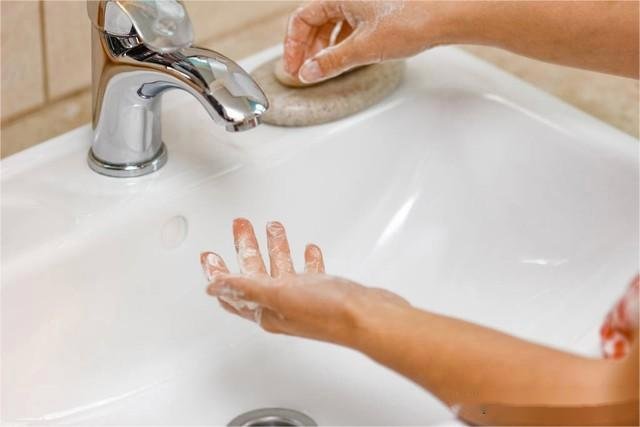
Proper hand washing
When discussing how to effectively reduce hand bacteria, proper hand washing is undoubtedly the most basic and important method. As a simple yet effective hygiene practice, it can significantly reduce the risk of disease transmission. Research shows that washing hands with hand sanitizer and running water can remove up to 99% of bacteria.
Disinfectant products
In terms of keeping hands clean, in addition to traditional soap and water, modern technology provides us with a variety of convenient disinfection products. These products can not only effectively kill hand bacteria, but also adapt to different usage scenarios and personal needs:
| Product type | Main ingredients | 使用法 | Indications |
| Quick-drying hand disinfectant | Alcohols (ethanol, isopropanol) | Take about 2.0 mL and rub for 1 minute | Office, school, home |
| Hand-free disinfectant | Alcohols + skin care ingredients | Use directly without washing | Travel, outdoor activities |
| Foam disinfectant | Alcohols + foaming agent | Press out foam and apply evenly | Hospitals, clinics, laboratories |
Develop good habits
Let’s learn some good habits for finger hygiene:
- Trimming nails regularly: Short nails are not easy to hide bacteria
- Using paper towels to open doors: Reduce direct contact with public facilities
- Carry disinfectant wipes with you: Clean your hands at any time when going out
- Use your elbow to press the elevator button: Reduce contact with high-contact surfaces
- Wash hands before and after meals: Strengthen hand hygiene at critical moments
- Wear good finger condoms or gloves: Isolating bacteria is naturally more perfect.

